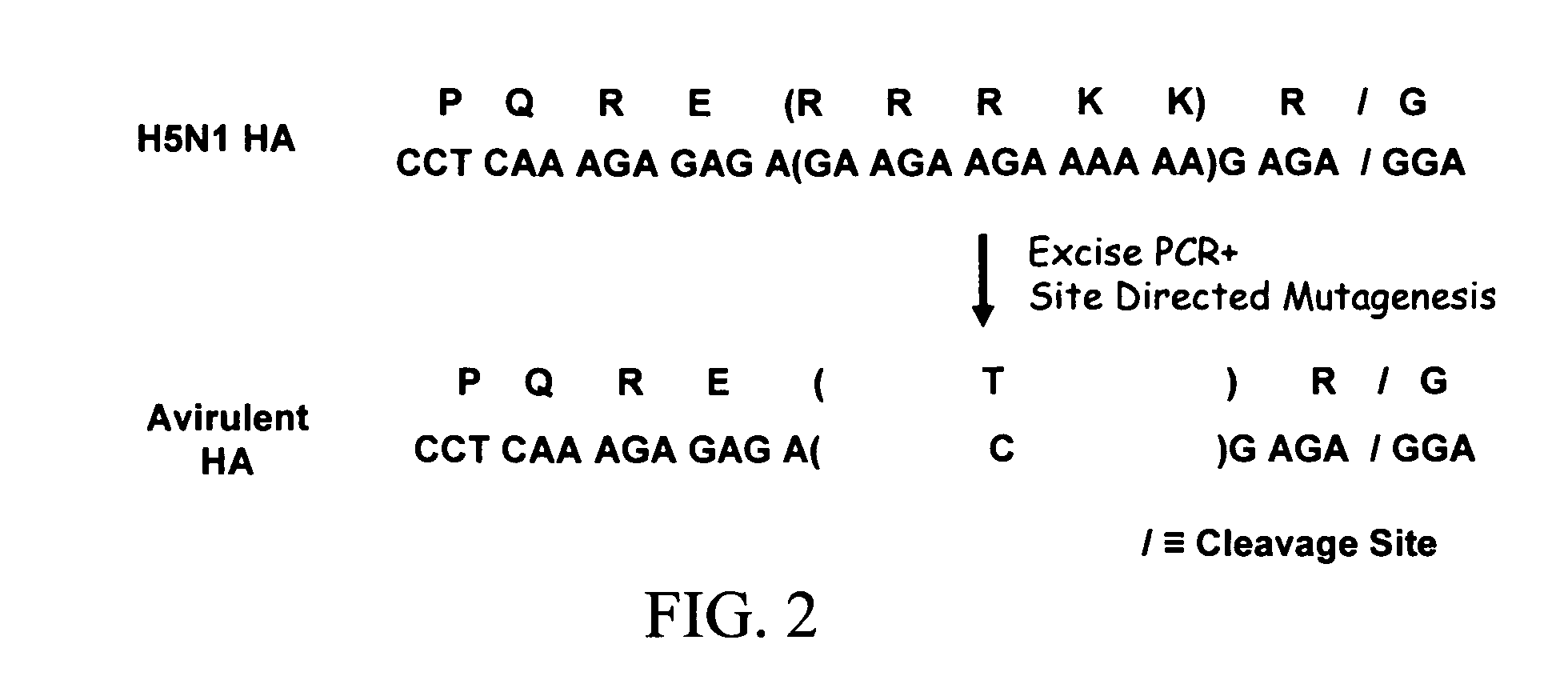Chimeric viruses presenting non-native surface proteins and uses thereof
- Summary
- Abstract
- Description
- Claims
- Application Information
AI Technical Summary
Benefits of technology
Problems solved by technology
Method used
Image
Examples
Embodiment Construction
[0102]The present invention provides chimeric negative strand RNA viruses engineered to express fusion proteins that incorporate into the virion, methods for producing such chimeric viruses and the use of such viruses, for example as immunogens, in immunogenic formulations, or in in vitro assays. The chimeric viruses of the invention are characterized by displaying, on the surface of the virion, not only antigens associated with the virus but also the fusion protein.
[0103]The viruses that may be engineered in accordance with the methods of the invention can be any enveloped virus. In a specific embodiment, the viruses that may be engineered in accordance with the methods of the invention have segmented or non-segmented genomes, single stranded or double stranded genomes, and express at least one essential glycoprotein (e.g., NA, HA, FIN or F) that is incorprated into the virial envelope. The viruses for use in accordance with the methods of the invention can be selected from natural...
PUM
| Property | Measurement | Unit |
|---|---|---|
| Volume | aaaaa | aaaaa |
| Mass | aaaaa | aaaaa |
| Power | aaaaa | aaaaa |
Abstract
Description
Claims
Application Information
 Login to View More
Login to View More - R&D
- Intellectual Property
- Life Sciences
- Materials
- Tech Scout
- Unparalleled Data Quality
- Higher Quality Content
- 60% Fewer Hallucinations
Browse by: Latest US Patents, China's latest patents, Technical Efficacy Thesaurus, Application Domain, Technology Topic, Popular Technical Reports.
© 2025 PatSnap. All rights reserved.Legal|Privacy policy|Modern Slavery Act Transparency Statement|Sitemap|About US| Contact US: help@patsnap.com



